Ever wondered how ramen noodles are made on a large scale? I had the chance to go behind the scenes at Marutaka Seimen, a ramen noodle factory in Yokohama, where I got a hands-on look at the process. I learned the foundations of noodle making, and trust me, it’s a lot more fascinating than I thought. Let’s dive into what I discovered about crafting the perfect ramen noodles!
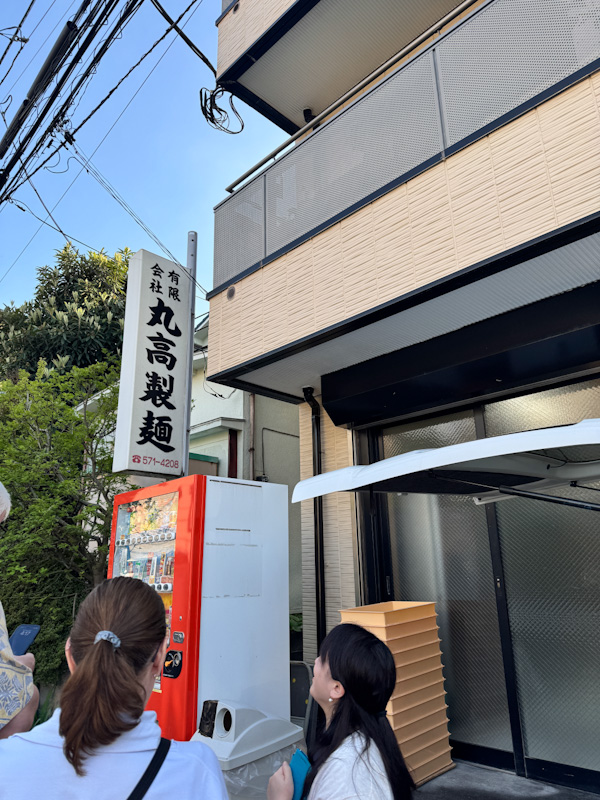
1. What Makes Ramen Noodles Different?
If you’ve read my previous post about the Shin-Yokohama Ramen Museum, you’re probably familiar with the basics of ramen history. Ramen originated from China, and when merchants brought it to Japan, it evolved into something uniquely Japanese.
Unlike other popular noodles in Japan, like Soba and Udon, ramen has its own distinct characteristics. Here’s a quick comparison:
- Udon: Made with Udon flour or rice flour, Udon noodles are thick, chewy, and have a semi-translucent look thanks to their high water content.
- Soba: Made with buckwheat, Soba noodles have a delicate, jelly-like texture.
The key difference? Ramen noodles stand out because of their use of Kansui, an alkaline mineral water that gives ramen noodles their signature yellow color and bouncy, springy texture. Unlike Udon and Soba, both of which rarely deviate from their basic recipes, ramen noodles offer a lot more room for variety and customization.
2. Why is it Called Ramen?
The name “Ramen” comes from the Chinese word 拉麵, which means “pulled noodles.” Originally, ramen noodles were hand-pulled, which is why they’re called that. However, this method only allowed for small batches, which is why machines have taken over.
At Marutaka Seimen, the oldest noodle-pulling machine is more than 25 years old! Over the years, these machines have evolved to handle everything—from mixing the flour to cutting and bundling noodles. Technology meets tradition in ramen noodle production!
Did you know?
Ever seen ramen shops label their noodles “Chuka Soba”? Soba means “noodle,” so Chuka Soba literally means “Chinese noodles.” It’s not the buckwheat soba we usually think of.
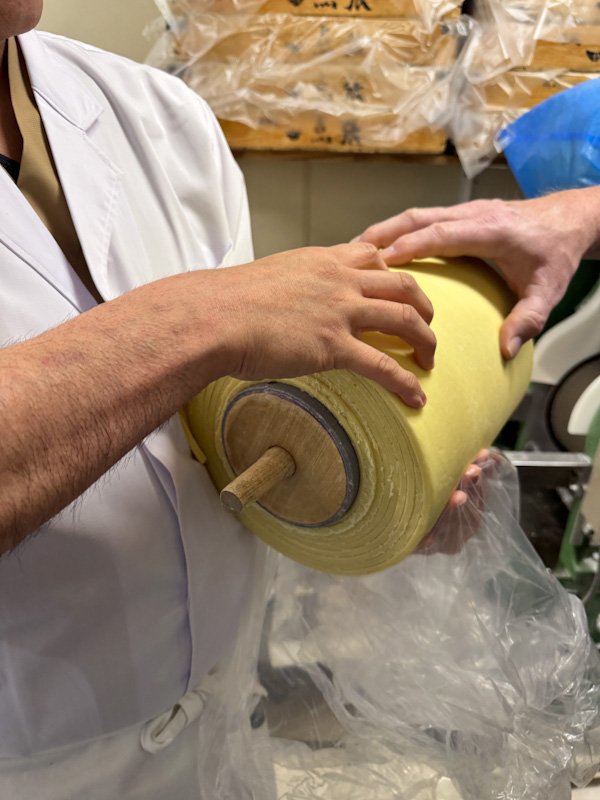
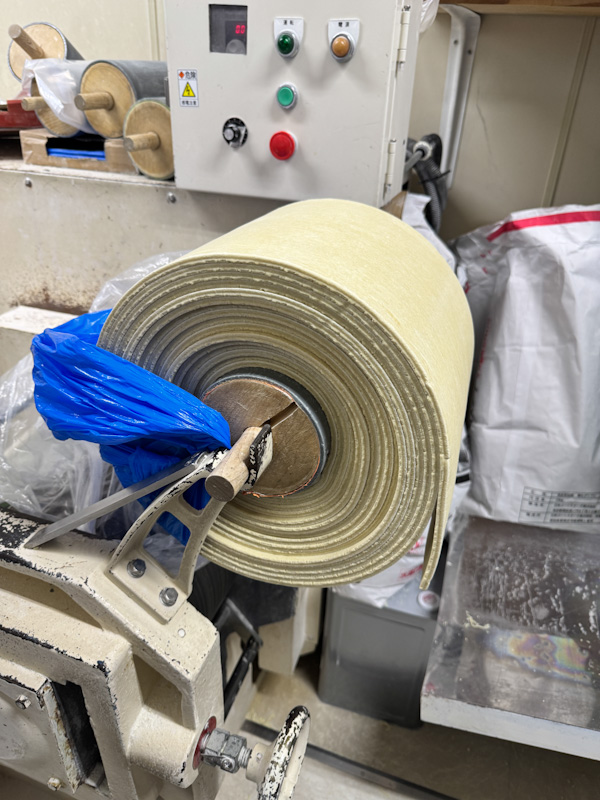

3. What is Kansui?
Now, you might be wondering, where did Kansui come from? Back in ancient China, noodles were made with water from the “Kan” region, specifically from a lake with high alkaline properties. This water gave the noodles their unique springy texture and yellowish hue.
The secret? Kansui is the key! It’s essentially a mineral water with a high pH that bonds the noodles together, creating that signature bounce and yellow color. Today, ramen makers use substitutes like potassium carbonate, but the idea behind Kansui remains the same.
Did you know?
Want to replicate kansui at home? Regular baking soda won’t cut it. But if you bake it in the oven, the pH goes up—and voilà, homemade alkaline water.
4. What Goes into Making a Noodle?
Ramen noodle ingredients are pretty simple—water, flour, Kansui, and salt—but the ratios make all the difference in the world.
Here’s how each ingredient affects the noodles:
- Water: More water = softer noodles. Less water = firmer noodles.
- Flour: The type of flour impacts the noodle’s flavor, texture, and color. Chefs often mix different flours to create their ideal noodle.
- Kansui: This gives ramen its springy texture and yellowish color.
- Salt: Usually around 1% of the mixture, salt adds flavor, but chefs sometimes experiment with different salts to create unique tastes.
Getting the right ratio is like a mathematical equation. The balance of these ingredients creates the perfect noodle that complements the broth.
Did you know?
The firm texture in low-hydration noodles such as the popular Hakata style noodles found at brands like Ichiran and Ippudo - can only be achieved using machines because the dough won’t stick due to the low amount of water. You need machine to compress it
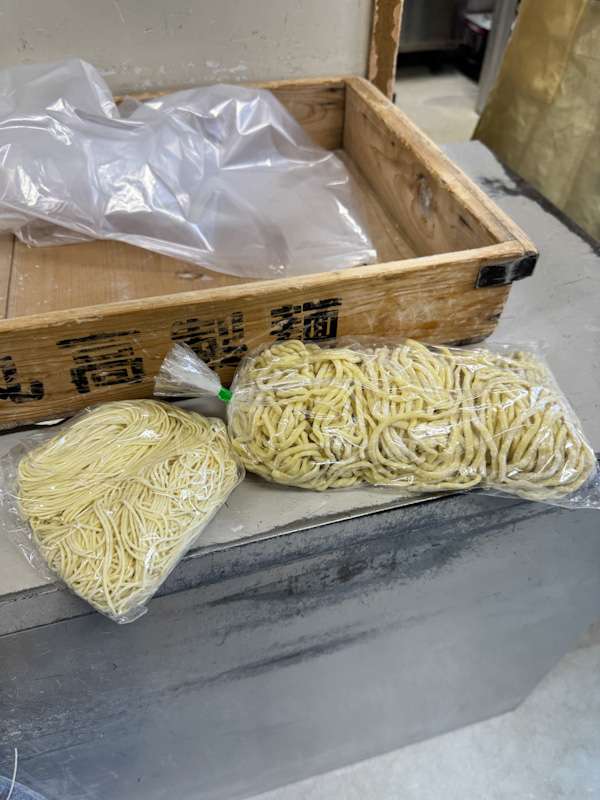
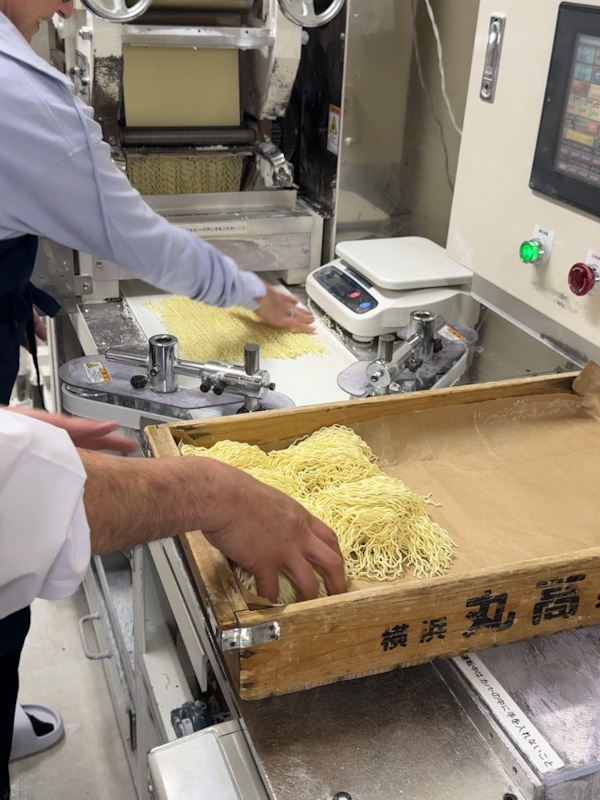
5. What Type of Wheat Should I Use Then?
Here’s where it gets scientific. Different types of wheat flour have varying levels of starch and protein. Think of protein as the structure (like a building’s metal frame) and starch as the smooth exterior (like the walls).
- Starch: The smooth, mochi-mocher texture you feel when slurping up noodles. It also gives noodles their semi-translucent look.
- Protein: Gives the noodles their firmness and bite.
For example, Hakata-style noodles are firm and have a strong bite, thanks to their low starch and high protein content. Sapporo-style noodles, on the other hand, are softer and springier due to their high starch and lower protein content.
Did you know?
The noodle-making process might look easy, but even small mistakes in protein-starch balance can cause noodles to fall apart in boiling water. That’s why mastering the math takes years.
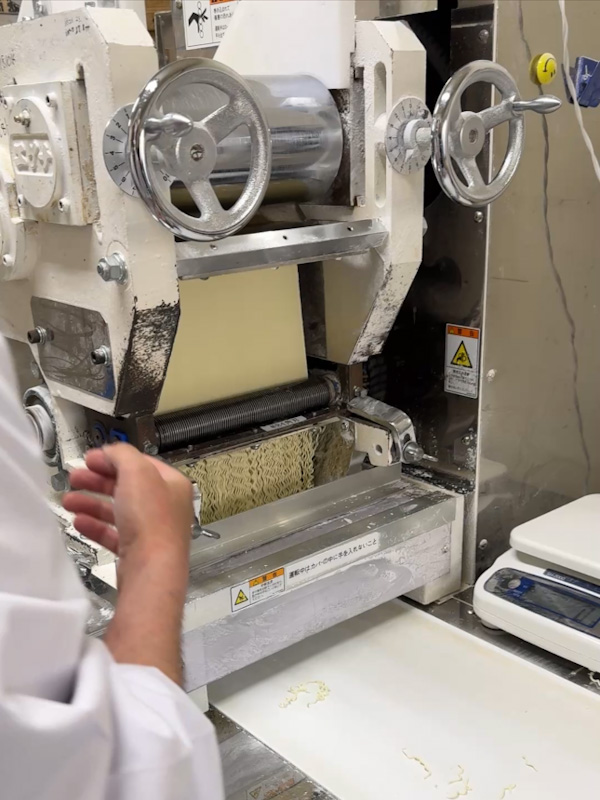
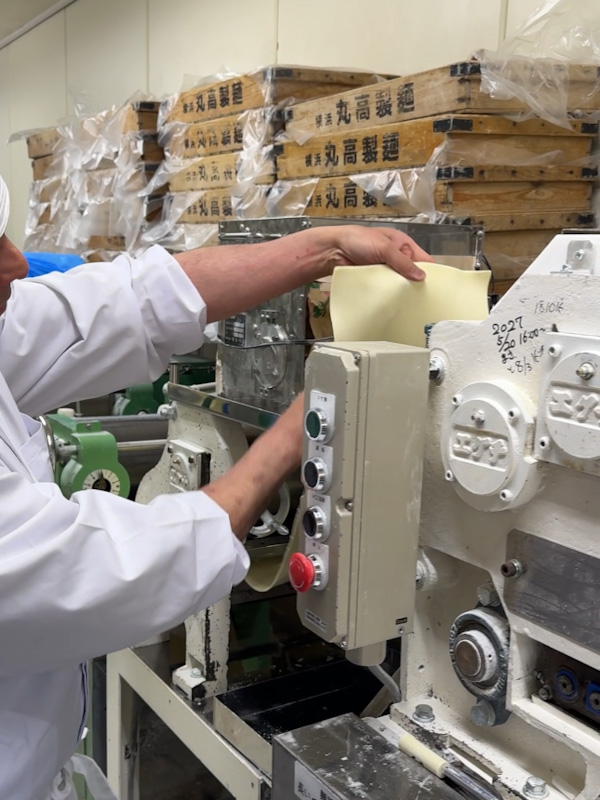
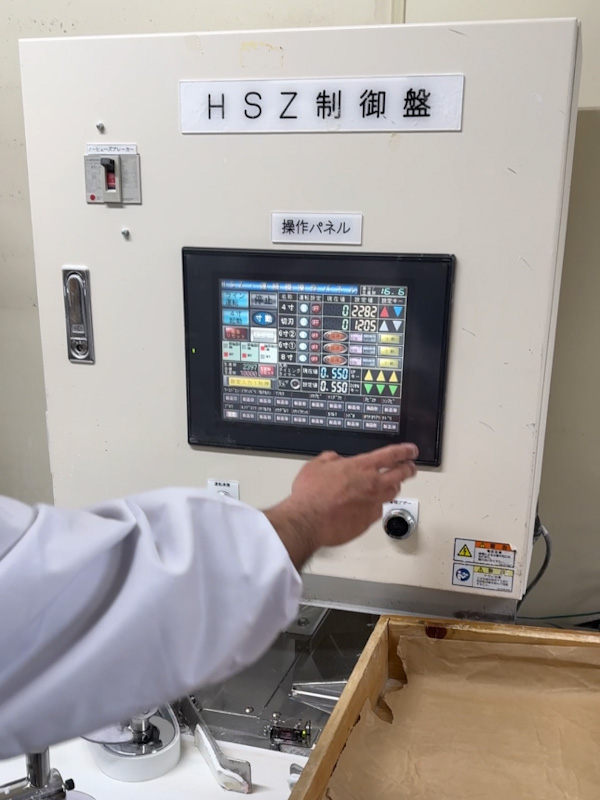
6. What Shape Should My Noodles Be?
When it comes to cutting and shaping ramen noodles, there’s no one-size-fits-all approach. It all depends on the chef’s preferences. At Marutaka Seimen, customization is key! From the type of flour to the thickness, chefs can create their own unique noodles based on their ramen noodle vision.
Some interesting factors for customization include:
- Flour type and mix
- Water content
- Kansui type and amount
- Salt content
- Thickness and texture (straight, curly, or wavy)
- Rest time
The options are endless, and experimenting with these variables can create some truly unique ramen noodles.
7. Why Rest the Dough and How Much Rest?
Resting the dough isn’t just for allowing the flavors to develop; it also ensures the water permeates evenly, and air pockets slowly escape. The rest period helps in creating the perfect texture for the noodles.
Some chefs even rest their dough for up to two weeks to get the ideal noodle texture. One chef preferred his noodles to be rested in a fridge for firmer noodles with a darker tint—fascinating, right?
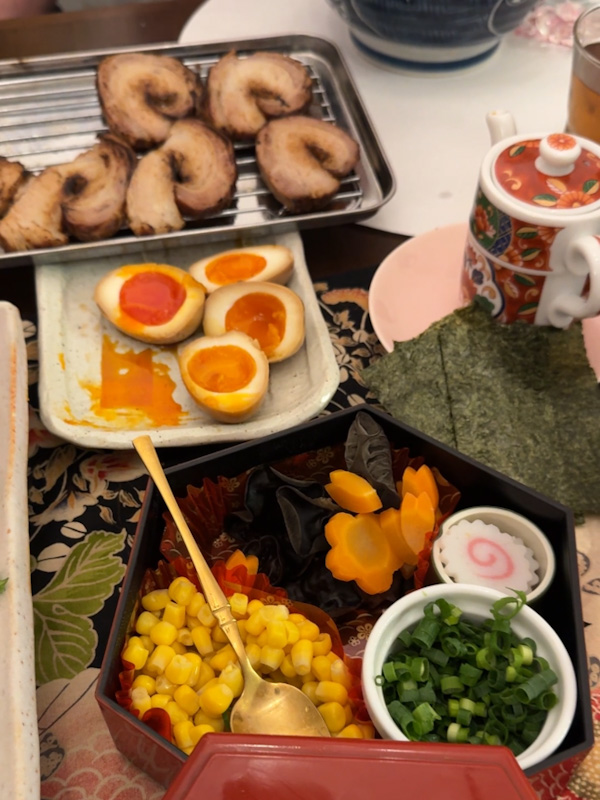

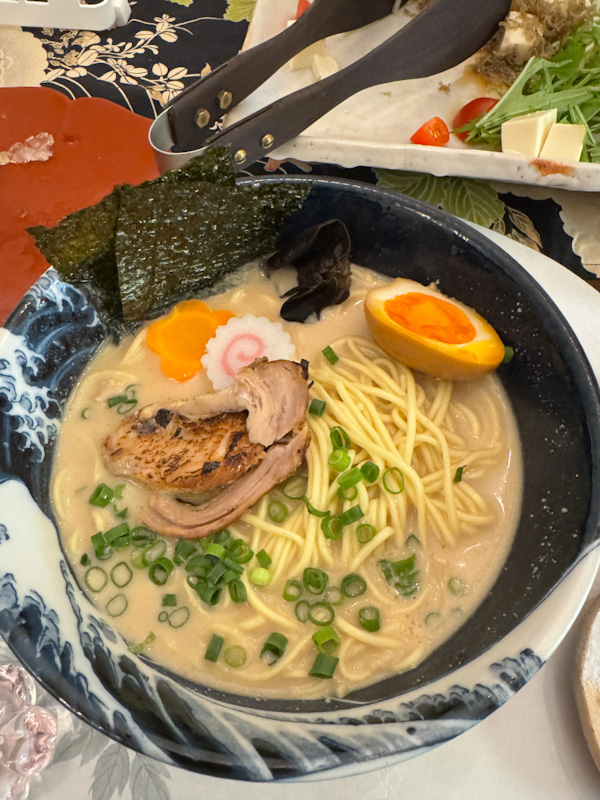
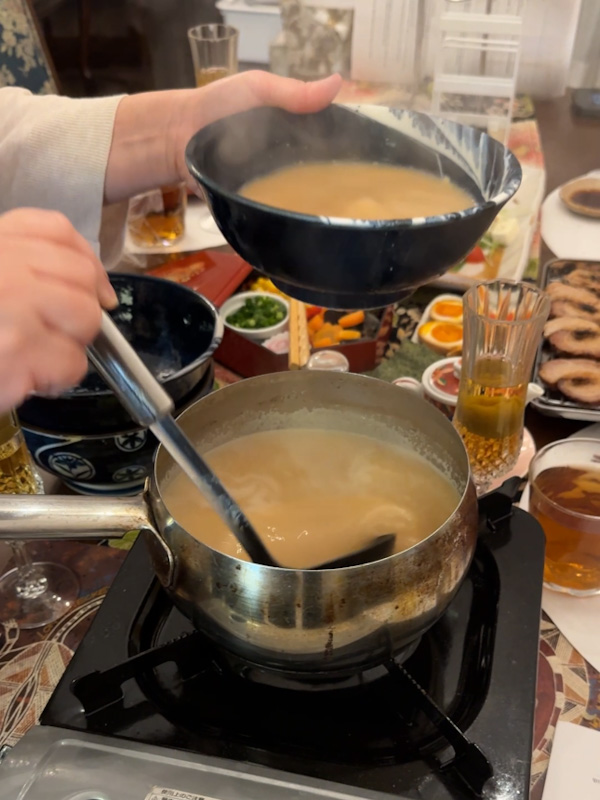
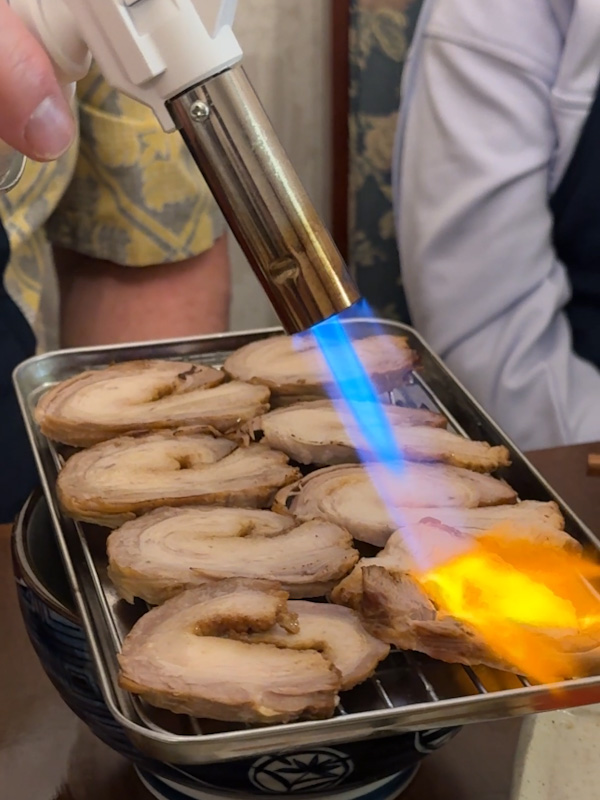
After a fascinating tour of Marutaka Seimen, we ended the day with a ramen home cooking class, using the customized noodles we made earlier. It was such a rare and enlightening experience to learn from a true noodle master. Noodle factories like this are usually out of bounds for visitors, so getting the chance to ask endless questions and dive deep into the craft of noodle making was a real treat.


